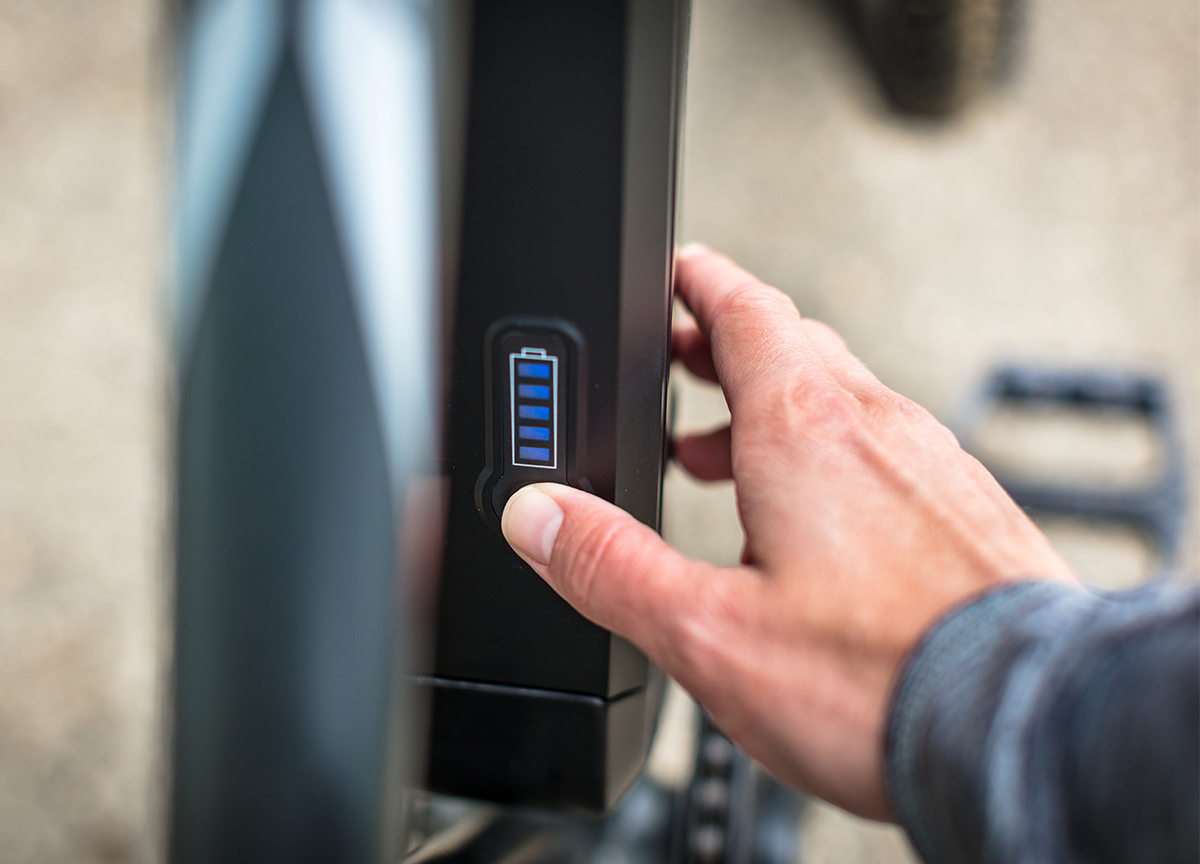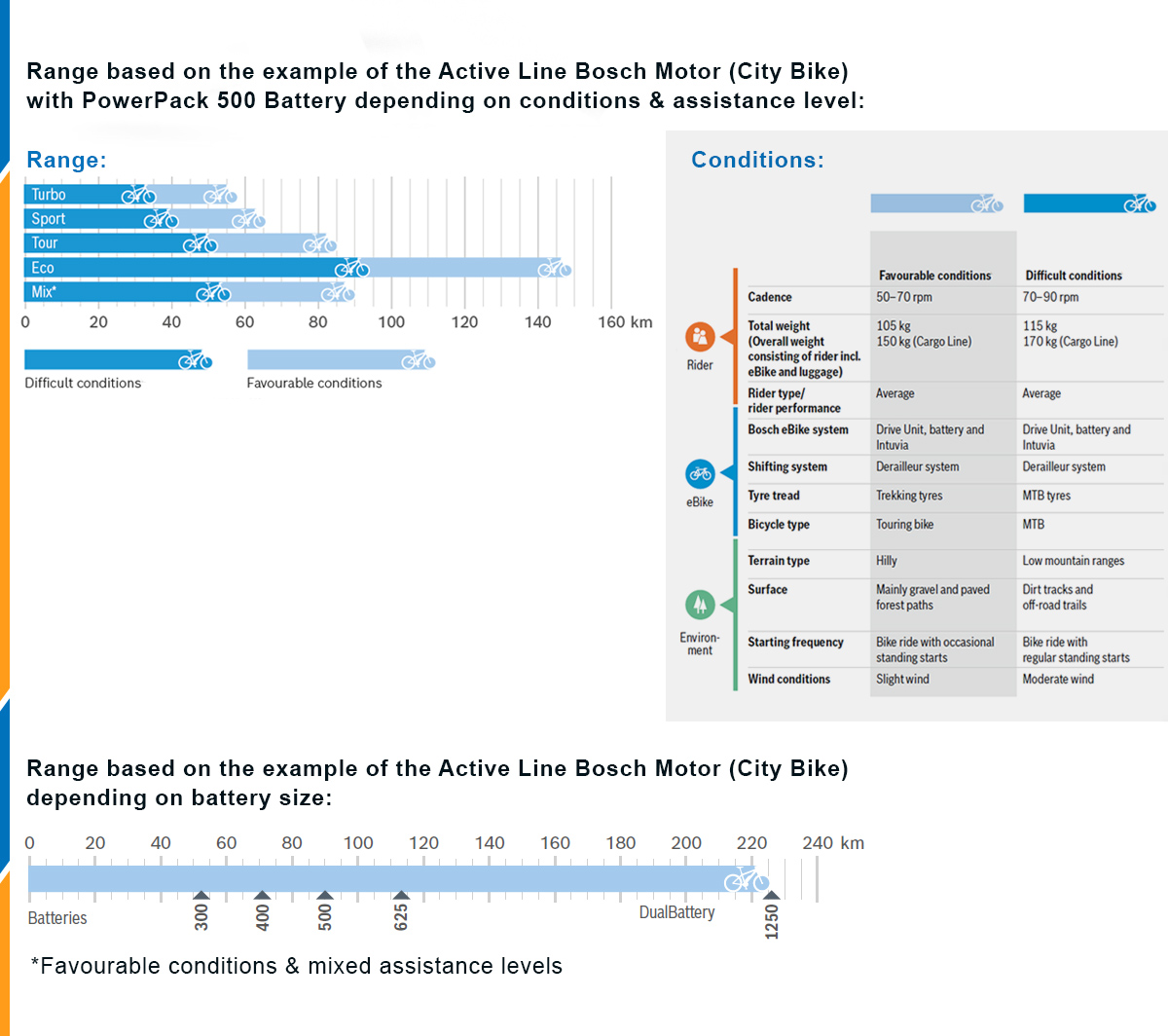E-Bike Battery User Guide
Batteries are a crucial component of e-bikes, offering efficient, long-lasting, and hassle-free power. They are designed to be user-friendly, making your e-bike experience smooth and enjoyable.
This guide will help you get the most out of your e-bike battery, ensuring it performs at its best and lasts as long as possible. From understanding charging times to tips on extending battery life, we've got you covered.
1. Charging Time
The charging time of an e-bike battery depends on the battery size and the type of charger used.
- Generally, larger batteries take longer to charge
- Higher amperage chargers can reduce charging times significantly
- It's essential to use the charger specified by the battery manufacturer to ensure safe and efficient charging.
See Battery Charging Times Table based on Bosch batteries:

2. How to Increase Battery Life
Optimal Charging Practices:
- Charge at Room Temperature: Charging your battery at room temperature (around 20°C or 68°F) is ideal. Extreme temperatures can negatively impact the charging process and the battery's longevity. Also try to find shade or cool location when paring your e-bike
- Avoid Full Discharges: Try not to let the battery completely discharge before recharging. Partial discharges followed by recharges are better for lithium-ion batteries.
- Low-load use: Using your e-bike on lower assistance levels can extend the battery's lifespan. By reducing strain on the battery, you get more charge cycles and consistent performance. Ride smoothly and avoid high-assistance bursts for a longer-lasting battery.

Storage & Riding During Winter
- Storage: Store the battery in a dry place at cool temperatures. Aim for a charge level between 30-60% when storing the battery for extended periods.
- Winter Riding: Cold temperatures can reduce battery efficiency. If riding in winter, keep the battery warm by storing it indoors before use and using a thermal cover while riding.
Factors impacting battery life:
- Heavy-load use
- High Temperatures: Prolonged exposure to high temperatures accelerates battery aging.
- High Charge Levels: Constantly keeping the battery at a high charge level (above 80%) can reduce its lifespan.
- Intense Usage: Frequent deep discharges and high current draws shorten battery life.
- Prolonged storage in a fully charged or fully discharged state
3. Storing the Battery
Store the batteries in a dry location at room temperature. Fully charging or fully discharging results in higher loading of the battery. The ideal charge status for lengthy periods of storage is approx. 30 to 60 % or two to three LEDs on the battery indicator.
- Environment: Store the battery in a dry place with cool temperatures, ideally between 10-20°C.
- Storage Level: Keep the battery charge between 30-60% for long-term storage.
- Remove from e-Bike: If not using the e-bike for an extended period, remove the battery to prevent parasitic drain and potential damage.
4. Sensitivities of e-Bike Batteries
E-bike batteries are robust yet sensitive to certain conditions. Proper care is essential to maintain their efficiency and longevity. Understanding these sensitivities and taking preventive measures can help you keep your battery in optimal condition, ensuring a reliable and enjoyable riding experience.
- Overheating: Avoid exposing the battery to high temperatures or direct sunlight.
- Water: Protect the battery from water ingress. Do not submerge it or clean it with a high-pressure water jet.
- Physical Damage: Handle the battery carefully to prevent drops or impacts that could damage the internal cells.
- Long-term Inactivity: If not used for a long time, periodically check and recharge the battery to maintain optimal health.
5. Range on a Single Charge
The range an e-bike can travel on a single charge depends on several factors:
- Battery Size: Larger batteries provide more range.
- Terrain: Hilly or rough terrain consumes more power.
- Assistance Level: Higher assistance levels drain the battery faster.
- Weight: The combined weight of the rider, cargo, and e-bike affects the range.

For precise range estimation, use tools like the Bosch Range Calculator, which consider various factors to help plan your rides better.
6. Tips and Tricks for Longer Riding on a Single Charge
- Cadence: Maintain a steady cadence to ensure efficient power use.
- Total Weight: Reduce the load by carrying only essential items.
- Tyre Pressure: Keep tires inflated to the recommended pressure to reduce rolling resistance.
- Starting & braking: As with a car, frequent starting and stopping is less economical than long distances at almost constant speed.
- Assistance Level: Higher assistance levels drain the battery faster.
7. Popular Questions and Answers
How long does an e-bike battery last?
An e-bike battery typically lasts between 500 to 1000 charge cycles, depending on usage and maintenance.
Can I use any charger for my e-bike battery?
No, always use the charger provided by or recommended by the battery manufacturer to avoid potential damage and ensure safety.
How should I dispose of an old e-bike battery?
E-bike batteries should be recycled properly. Take them to a local recycling center or your e-bike dealer, who can dispose of them safely.




